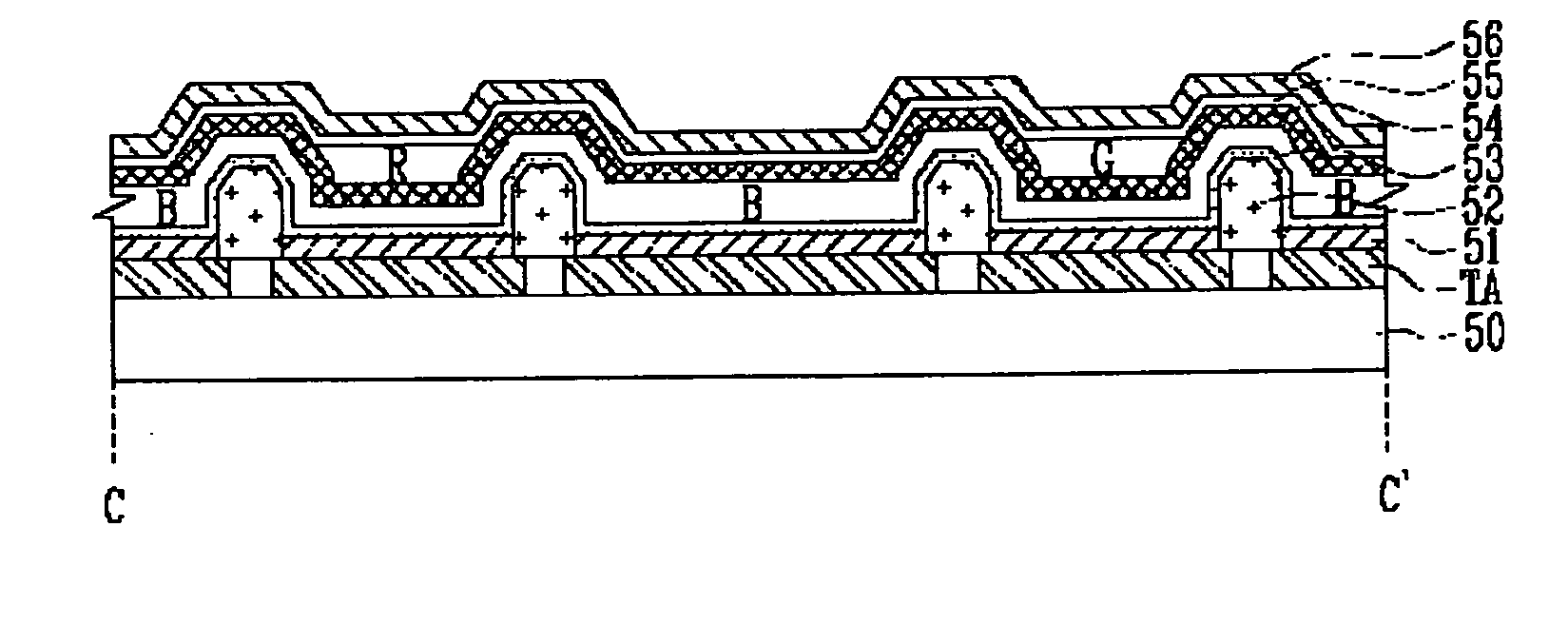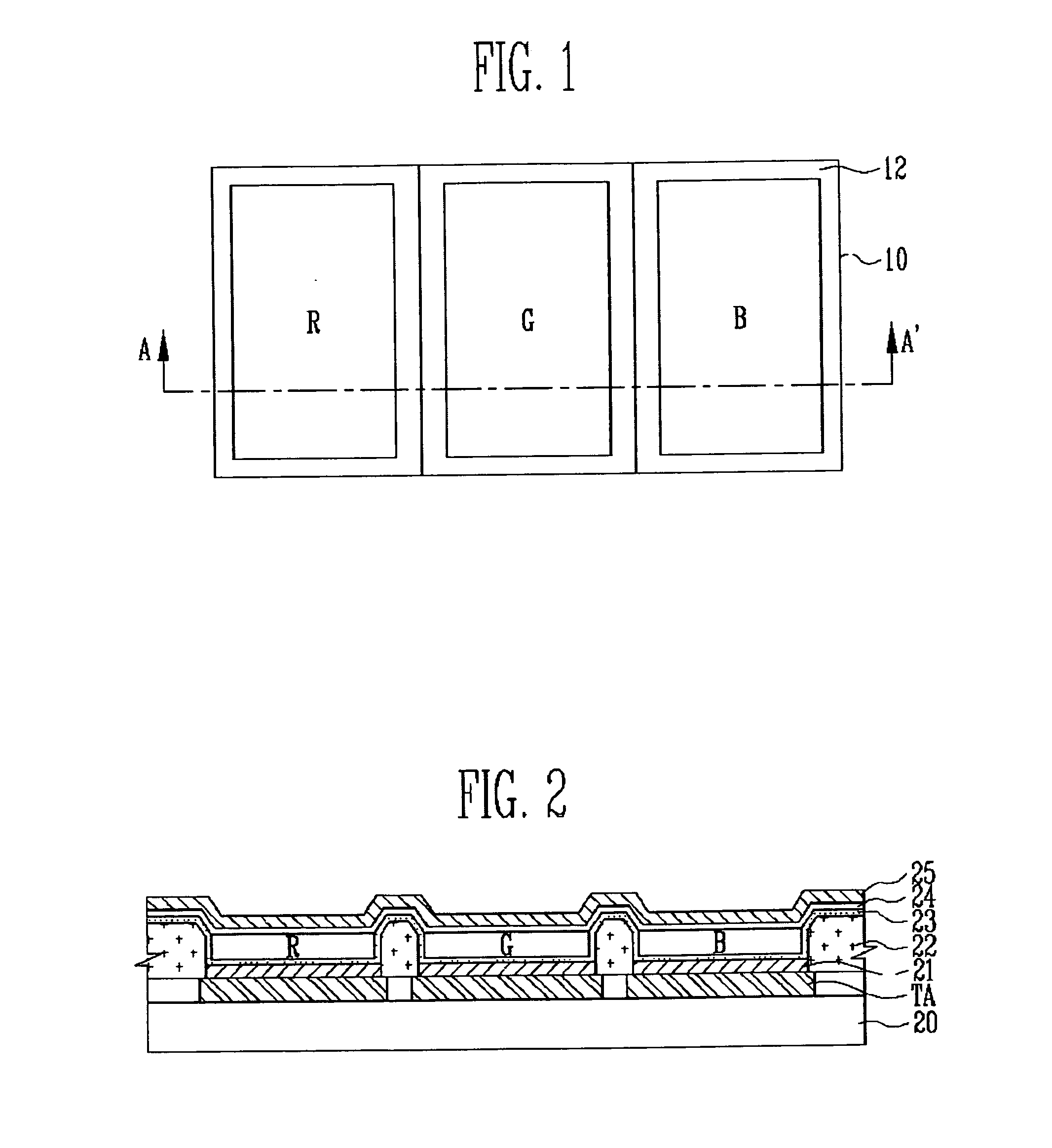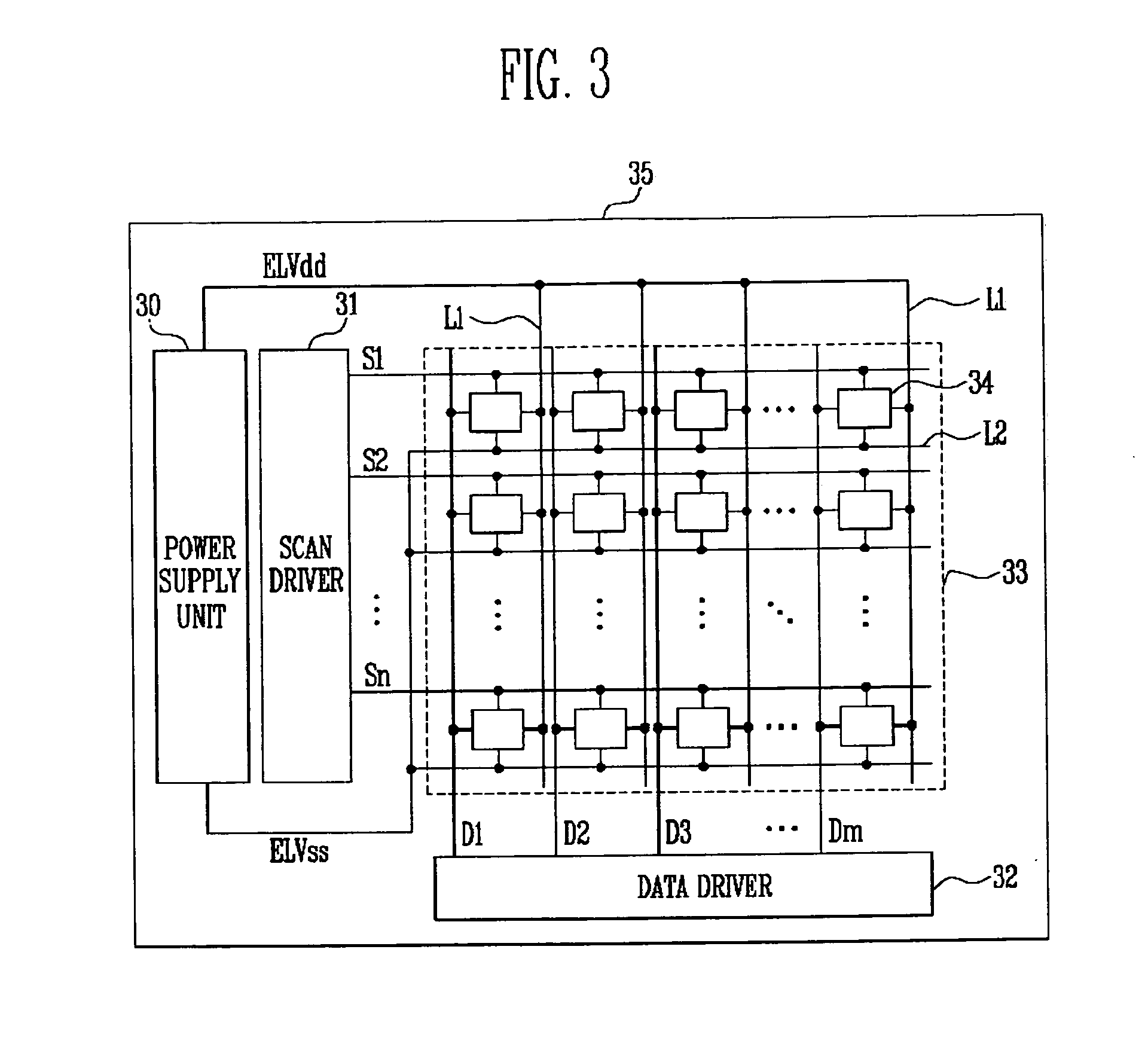Organic light emitting display and method for fabricating the same
a technology of light-emitting display and organic material, which is applied in the direction of discharge tube luminescnet display, discharge tube/lamp details, electric discharge lamps, etc., can solve the problems of high cost of laser equipment, difficulty in improving the quality of a transfer layer, and difficulty in making displays with improved life span, so as to improve the life span and improve the effect of low luminous efficiency
- Summary
- Abstract
- Description
- Claims
- Application Information
AI Technical Summary
Benefits of technology
Problems solved by technology
Method used
Image
Examples
first embodiment
[0057]FIG. 4 is a plan view of one pixel region shown in FIG. 3 as a layout of the organic light emitting display according to the present invention.
[0058] Referring to FIG. 4, one pixel region 40 includes red (R), green (G) and blue (B) sub pixel regions. The red (R), green (G) and blue (B) sub pixel regions have areas different from each other. In particular, the blue (B) sub pixel region having relatively lower luminous efficiency is formed over an entire surface of the pixel region 40 in common. The red (R) and green (G) sub pixel regions are formed at a closed curve of the blue (B) sub pixel region so as not to overlap each other. In detail, the red (R) and green (G) sub pixel regions are formed in a stripe pattern with the blue (B) sub pixel region disposed therebetween. Furthermore, the blue (B) sub pixel region is always disposed at a peripheral portion of the pixel region 40.
[0059] A forming area of the blue (B) sub pixel, except forming areas of the red (R) and s green (G...
second embodiment
[0108]FIG. 11 is a plan view of the one pixel region shown in FIG. 3 as a layout of the organic light emitting display according to the present invention.
[0109] Referring to FIG. 11, one pixel region 110 includes red (R), green (G), and blue (B) sub pixel regions. The red (R), green (G) and blue (B) sub pixel regions have different areas from each other. In particular, the blue (B) sub pixel region having relatively lower luminous efficiency is formed over an entire surface of the pixel region 110 in common. The red (R) and green (G) sub pixel regions are formed in a blue (B) closed curve so as not to overlap each other. The red (R) sub pixel region is formed at an upper left portion of the pixel region 110, whereas the green (G) sub pixel region is formed at a lower right portion of the pixel region 110. The red (R), green (G) and blue (B) sub pixels are arranged in a delta pattern having a triangular shape. Each of the red (R), green (G) and blue (B) sub pixel regions has a square...
third embodiment
[0111]FIG. 12 is a plan view of one pixel region shown in FIG. 3 as a layout of the organic light emitting display according to the present invention.
[0112] Referring to FIG. 12, one pixel region 120 includes red (R), green (G) and blue (B) sub pixel regions. The red (R), green (G) and blue (B) sub pixel regions have different areas from each other. In particular, the blue (B) sub pixel region having relatively lower luminous efficiency is formed over an entire surface of the pixel region 120 in common. The red (R) and green (G) sub pixel regions are formed in a blue (B) closed curve so as not to overlap each other. The red (R) sub pixel region is formed at an upper left portion of the pixel region 120, whereas the green (G) sub pixel region is formed at an upper right portion of the pixel region 120. The red (R), green (G) and blue (B) sub pixels are arranged in a delta pattern having a triangular shape. Although the pixel region 120 of FIG. 12 has a construction similar to that of...
PUM
 Login to View More
Login to View More Abstract
Description
Claims
Application Information
 Login to View More
Login to View More - R&D
- Intellectual Property
- Life Sciences
- Materials
- Tech Scout
- Unparalleled Data Quality
- Higher Quality Content
- 60% Fewer Hallucinations
Browse by: Latest US Patents, China's latest patents, Technical Efficacy Thesaurus, Application Domain, Technology Topic, Popular Technical Reports.
© 2025 PatSnap. All rights reserved.Legal|Privacy policy|Modern Slavery Act Transparency Statement|Sitemap|About US| Contact US: help@patsnap.com



